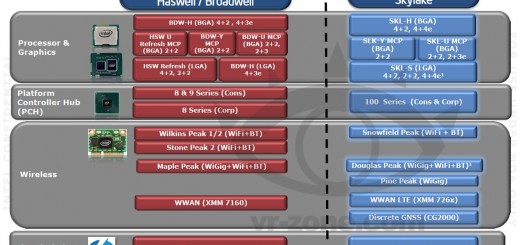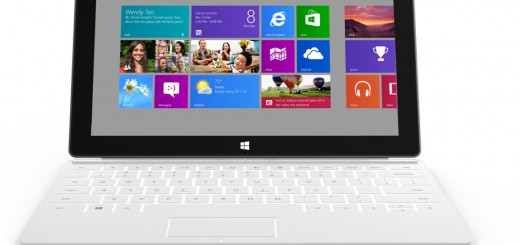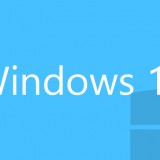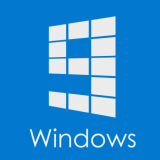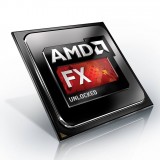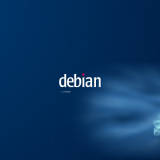AMD presents Kaveri and ups the ante on APU performance
AMD’s Kaveri is the latest generation of APUs (Accelerated Processing Unit), and was first introduced back in January with several desktop parts. Now, it’s time for the mobile space.
The new family of APUs brings a number of improvements compared to last year’s Richland (here’s a very good article by Anandtech explaining the differences from the desktop launch back in January, check it out if you are interested) – but will it be enough for AMD to go up against Haswell? First of all, here’s the lineup:
|
AMD 35W Standard Voltage Mobile APUs
|
||||||
|
Trinity
|
Richland
|
Kaveri
|
||||
| Model | A10-4600M | A8-5557M | A10-5757M | A8-7200P | A10-7400P | FX-7600P |
| Core Name | Trinity | Richland | Richland | Kaveri | Kaveri | Kaveri |
| Microarch | Piledriver | Piledriver | Piledriver | Steamroller | Steamroller | Steamroller |
| Modules/Cores | 2/4 | 2/4 | 2/4 | 2/4 | 2/4 | 2/4 |
| CPU Base Freq | 2300 | 2100 | 2500 | 2400 | 2500 | 2700 |
| Max Turbo | 3200 | 3100 | 3500 | 3300 | 3400 | 3600 |
| TDP | 35W | 35W | 35W | 35W | 35W | 35W |
| L1 Cache | 128KB I$ 64 KB D$ |
128KB I$ 64 KB D$ |
128KB I$ 64 KB D$ |
192 KB I$ 64 KB D$ |
192 KB I$ 64 KB D$ |
192 KB I$ 64 KB D$ |
| L2 Cache | 2x2MB | 2x2MB | 2x2MB | 2x2MB | 2x2MB | 2x2MB |
| Graphics | HD 7660G | HD 8550G | HD 8650G | R5 | R6 | R7 |
| GPU Cores | 384 | 256 | 384 | 256 | 384 | 512 |
| GPU Clock | 685 | 720 | 720 | 626 | 654 | 686 |
| Max DDR3 | 1600 | 1600 | 1600 | 1866 | 1866 | 2133 |
|
AMD 17W Ultra-Low Voltage Mobile APUs
|
||||
|
Trinity
|
Richland
|
Kaveri
|
||
| Model | A4-4455M | A4-4145M | A6-5345M | A6-7000 |
| Core Name | Trinity | Richland | Richland | Kaveri |
| Microarch | Piledriver | Piledriver | Piledriver | Steamroller |
| Modules/Cores | 1/2 | 1/2 | 1/2 | 1/2 |
| CPU Base Freq | 2100 | 2000 | 2200 | 2200 |
| Max Turbo | 2600 | 2600 | 2800 | 3000 |
| TDP | 17W | 17W | 17W | 17W |
| L1 Cache | 128KB I$ 64 KB D$ |
128KB I$ 64 KB D$ |
128 KB I$ 64 KB D$ |
192 KB I$ 64 KB D$ |
| L2 Cache | 2MB | 1MB | 1MB | 1MB |
| Graphics | HD 7500G | HD 8130G | HD 8410G | R4 |
| GPU Cores | 256 | 128 | 192 | 192 |
| GPU Clock | 424 | 554 | 600 | 553 |
| Max DDR3 | 1333 | 1333 | 1333 | 1600 |
|
AMD 19W Ultra-Low Voltage Mobile APUs
|
|||||
|
Trinity
|
Richland
|
Kaveri
|
|||
| Model | A8-4555M | A8-5545M | A8-7100 | A10-7300 | FX-7500 |
| Core Name | Trinity | Richland | Kaveri | Kaveri | Kaveri |
| Microarch | Piledriver | Piledriver | Steamroller | Steamroller | Steamroller |
| Modules/Cores | 2/4 | 2/4 | 2/4 | 2/4 | 2/4 |
| CPU Base Freq | 1600 | 1700 | 1800 | 1900 | 2100 |
| Max Turbo | 2400 | 2700 | 3000 | 3200 | 3300 |
| TDP | 19W | 19W | 19W | 19W | 19W |
| L1 Cache | 128KB I$ 64 KB D$ |
128KB I$ 64 KB D$ |
192 KB I$ 64 KB D$ |
192 KB I$ 64 KB D$ |
192 KB I$ 64 KB D$ |
| L2 Cache | 2x2MB | 2x2MB | 2x2MB | 2x2MB | 2x2MB |
| Graphics | HD 7600G | HD 8510G | R5 | R6 | R7 |
| GPU Cores | 384 | 384 | 256 | 384 | 384 |
| GPU Clock | 424 | 554 | 514 | 533 | 553 |
| Max DDR3 | 1333 | 1333 | 1600 | 1600 | 1600 |
|
AMD 17/19W Commercial Pro Series ULV APUs
|
|||
| Model | A6 Pro-7050B | A8 Pro-7150B | A10 Pro-7350B |
| Core Name | Kaveri | Kaveri | Kaveri |
| Microarch | Steamroller | Steamroller | Steamroller |
| Modules/Cores | 1/2 | 2/4 | 2/4 |
| CPU Base Freq | 2200 | 1900 | 2100 |
| Max Turbo | 3000 | 3200 | 3300 |
| TDP | 17W | 19W | 19W |
| L1 Cache | 192 KB I$ 64 KB D$ |
192 KB I$ 64 KB D$ |
192 KB I$ 64 KB D$ |
| L2 Cache | 1MB | 2x2MB | 2x2MB |
| Graphics | R4 | R5 | R6 |
| GPU Cores | 192 | 384 | 384 |
| GPU Clock | 533 | 533 | 553 |
| Max DDR3 | 1600 | 1600 | 1600 |
As far as performance is concerned, first benchmarks are encouraging, with AMD APUs giving you great performance in their respective price range; you can head here for some hard numbers. All in all, it seems AMD has got a very good offering, and with Kaveri laptops coming out the following months, they should fare rather well against their competition. I will leave you with the press release:
TAIPEI, Taiwan — COMPUTEX TAIPEI 2014 — June 4, 2014 — AMD (NYSE: AMD) today introduced its new 2014 Performance Mobile APUs designed for ultrathin and high-performance mobile PCs, bringing the features and capabilities of the popular and powerful AMD A-Series APU family (codenamed “Kaveri”) to power-efficient notebooks for both personal and professional use. The new mobile APUs mark the debut of Heterogeneous System Architecture (HSA) features and Graphics Core Next (GCN) Architecture for mobile devices, establishing them as AMD’s most advanced mobile APUs to-date. Notebook and desktop systems powered by AMD’s entire 2014 APU lineup, including systems from Acer, Asus, Dell, HP, Lenovo, Samsung, Toshiba and others also debuted at COMPUTEX TAIPEI 2014.
“AMD takes a major step forward today on our journey to transform and enhance the computing experience with the launch of the 2014 Performance Mobile APU family,” said Bernd Lienhard, corporate vice president and general manager, Client Business Unit, AMD. “With a combination of superior total compute performance, stunning graphics and efficient power use alongside industry-first technologies, these new APUs set a new bar for cutting-edge consumer and commercial PCs.”
The announcement of the 2014 Performance Mobile APU family features AMD’s first FX-branded enthusiast-class APU for notebooks, and follows the recent introduction of AMD’s 2014 Low-Power and Mainstream APUs.
Introducing AMD PRO
Responding to the needs of an evolving commercial marketplace for longevity, performance and stability in enterprise systems, AMD has introduced a professional line of the Performance Mobile APUs. Designed especially with business in mind, AMD PRO A-Series components offer outstanding stability and longevity, and enable open, industry-standard DASH manageability.
In conjunction with today’s AMD PRO A-Series announcement, HP unveiled a complete lineup of Elite commercial PC designs featuring the AMD PRO series. The HP systems include the EliteBook 725, 745 and 755 G2 notebook, the EliteOne All-in-One and the EliteDesk desktop PCs.
AMD 2014 Performance Mobile APU Features
Revolutionary Architecture
- Up to 12 Compute Cores (4 CPU + 8 GPU)[i] deliver amazing performance and responsiveness, bringing to life the full capability of the APU on various workloads and applications
- The breakthrough new Heterogeneous System Architecture (HSA) allows the CPU and GPU to work together in harmony by quickly dividing and directing the right tasks toward the appropriate cores for new levels of performance and efficiency in consumer and commercial desktop and notebook PCs, thus enabling a new era of compute capabilities with compute cores
- Award-winning Graphics Core Next Architecture with AMD Radeon R7 series graphics and compute capability
- Support for UltraHD (4K) resolutions and new video post-processing enhancements that make 1080p videos look amazing when upscaled on an UltraHD-enabled monitor or TV[ii]
Best Gaming and Entertainment Experience
- Support for AMD’s acclaimed Mantle API that simplifies game optimizations for programmers and developers to unlock unprecedented levels of gaming performance[iii]
- AMD Radeon Dual Graphics provide a performance boost from 49 percent to 108 percent[iv] for the ultimate gaming experience
- Experience-enhancing features such as AMD Quick Stream, AMD Steady Video and AMD TrueAudio technologies combine to deliver lifelike audio and video[v]
Performance Leadership
- A10-APU: Up to 50 percent better graphics performance[vi] and more than 1.2x the compute performance[vii] versus Intel i5-4200U (“Haswell”)
- FX APU: Up to 58 percent better graphics performance[viii] and more than 1.13x the compute performance[ix] versus Intel i7-4500U (“Haswell”)
- FX APU: Up to 40 percent more graphics performance-per-watt[x] than our previous generation
- FX APU: Up to 30 percent more system compute-per-watt[xi] than our previous generation
About AMD
AMD (NYSE: AMD) designs and integrates technology that powers millions of intelligent devices, including personal computers, tablets, game consoles and cloud servers that define the new era of surround computing. AMD solutions enable people everywhere to realize the full potential of their favorite devices and applications to push the boundaries of what is possible. For more information, visit www.amd.com.
1. 12 Compute Cores (4 CPU + 8 GPU) A Compute Core is a hardware block (CPU, GPU or other processing element) within an HSA-enabled APU, that is programmable, capable of performing computational tasks, has access to entire system memory, and can queue workloads to other cores. For more visit amd.com/ComputeCores. Note: The following must be used on the same page as the claim: *4 CPU + 8 GPU. See amd.com/ComputeCores for details.
2. Requires 4K display and content. Supported resolution varies by GPU model and board design; confirm specifications with manufacturer before purchase.
3. Mantle application support is required.
4. Testing conducted by AMD Performance Labs on optimized AMD reference systems. PC manufacturers may vary configuration yielding different results. The 2014 AMD FX-7600P APU, code named “Kaveri”, paired with AMD Radeon R7 240 GCN Discrete Graphics demonstrated improved performance over APU- only configurations. The 2014 AMD FX-7600P paired with the AMD Radeon R7 240 Discrete Graphics card showed 65 FPS (frames per second) over 45.7 FPS for the AMD FX-7600P alone on Call of Duty Black Ops and 46.7 FPS over 22.5 FPS on Crysis 3; both games were set to 1920×1080. KVN-11
5. AMD EXPERIENCES REQUIREMENTS:
Additional hardware (e.g. HD or 4K monitor, USB, 3.0 ports, wirelessly enabled HDTV) and/or software (e.g. multimedia applications and/or wifi access) are required for the full enablement of some features. HD/4K Video display requires an HD/4K video source. Not all features may be supported on all components or systems – check with your component or system manufacturer for specific model capabilities and supported technologies. * For more information on AMD features and software go to www.amd.com/featuredetails.
AMD TrueAudio technology is offered by select AMD Radeon R9 and R7 200 Series GPUs and select AMD A-Series APUs and is designed to improve acoustic realism. Requires enabled game or application. Not all audio equipment supports all audio effects; additional audio equipment may be required for some audio effects. Not all products feature all technologies—check with your component or system manufacturer for specific capabilities.
6. Testing conducted by AMD Performance Labs on optimized AMD reference systems. PC manufacturers may vary configuration yielding different results. 3DMark 11 is used to simulate graphics performance; AMD A10-7300 APU scored 1420 while the “Haswell U” platform scored 946. AMD “Ballina” reference platform system used the AMD A10-7300 APU with Radeon R6 Graphics, 10 Compute Cores 4C+6G, 2×2048 MBytes of DDR3-1600 RAM, Microsoft Windows 8.1 Single Language, and 13.350.0.0 – 24-Feb-2014 driver. Intel Core i5-4200U CPU @ 1.60GHz with Intel HD Graphics, 2×2048 MBytes of DDR3-1600 (PC3-12800) RAM, Microsoft Windows 8.1 Single Language, 10.18.10.3412 – 28-Jan-2014 driver. KVN-14
7. Testing conducted by AMD Performance Labs on optimized AMD reference systems. PC manufacturers may vary configuration yielding different results. Basemark CL is used to simulate compute performance; AMD A10-7300 APU scored 44 while the “Haswell U” platform scored 36. AMD “Ballina” reference platform system used the AMD A10-7300 APU with Radeon R6 Graphics, 10 Compute Cores (4C+6G), 2×2048 MBytes of DDR3-1600 RAM, Microsoft Windows 8.1 Single Language, and 13.350.0.0 – 24-Feb-2014 driver. Intel Core i5-4200U CPU @ 1.60GHz with Intel HD Graphics, 2×2048 MBytes of DDR3-1600 (PC3-12800) RAM, Microsoft Windows 8.1 Single Language, 10.18.10.3412 – 28-Jan-2014 driver. KVN-15
8. Testing conducted by AMD Performance Labs on optimized AMD reference systems. PC manufacturers may vary configuration yielding different results. 3DMark 11 is used to simulate graphics performance; the AMD FX-7500 APU scored 1473 while the i7-4500U processor scored 932. AMD “Ballina” reference platform using AMD A10-7300 APU with Radeon R6 Graphics, 10 Compute Cores (4C+6G), 2×2048 MBytes of DDR3-1600 RAM, Microsoft Windows 8.1 Single Language, and 13.352.0.0 – 13-Apr-2014 driver.KVN-45
9. Testing conducted by AMD Performance Labs on optimized AMD reference systems. PC manufacturers may vary configuration yielding different results. Basemark CL score is used to simulate system performance; the AMD FX-7500 APU scored 44 while the i7-4500U processor scored 39. AMD “Ballina” reference platform using the AMD FX-7500 APU with Radeon R7 Graphics, 10 Compute Cores (4C+6G), 2×2048 MBytes of DDR3-1600 RAM, Microsoft Windows 8.1 Single Language, 13.350.0.0 – 10-Mar-2014. DELL Inspiron 5537, Intel Core i7-4500U CPU @ 1.80GHz with Intel HD Graphics Family, 2×2048 MBytes of DDR3-1600 RAM, Microsoft Windows 8.1 Single Language, 10.18.10.3496 – 10-Mar-2014.KVN-67
10. Testing conducted by AMD Performance Labs on optimized AMD reference systems. PC manufacturers may vary configuration yielding different results. 3DMark 11 Performance score divided by TDP (W) is used to simulate graphics performance per watt; the 19W AMD FX-7500 APU scored 1473 while the 25W AMD A10-5745M APU scored 1361. AMD “Ballina” reference platform using the AMD FX-7500 APU with Radeon R7 Graphics, 10 Compute Cores (4C+6G), 2×2048 MBytes of DDR3-1600 RAM, Microsoft Windows 8.1 Single Language, 13.350.0.0 – 10-Mar-2014 driver. Hewlett-Packard HP ENVY m6 Sleekbook, AMD A10-5745M APU with AMD Radeon HD 8610G graphics, 2×2048 MBytes of DDR3-1600 RAM, Microsoft Windows 8.1 Single Language, 13.300.0.0 – 18-Dec-2013 KVN-24
11. Testing conducted by AMD Performance Labs on optimized AMD reference systems. PC manufacturers may vary configuration yielding different results. PCMark 8 – Home score divided by TDP (W) is used to simulate productivity performance per watt; the 19W AMD FX-7500 APU scored 2574 while the 25W AMD A10-5745M APU scored 2581. AMD “Ballina” reference platform using the AMD FX-7500 APU with Radeon R7 Graphics, 10 Compute Cores (4C+6G), 2×2048 MBytes of DDR3-1600 RAM, Microsoft Windows 8.1 Single Language, 13.350.0.0 – 24-Feb-2014 driver. Hewlett-Packard HP ENVY m6 Sleekbook, AMD A10-5745M APU with AMD Radeon HD 8610G graphics, 2×2048 MBytes of DDR3-1600 RAM, Microsoft Windows 8.1 Single Language, 13.300.0.0 – 18-Dec-2013.KVN-32


